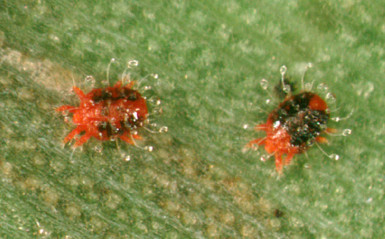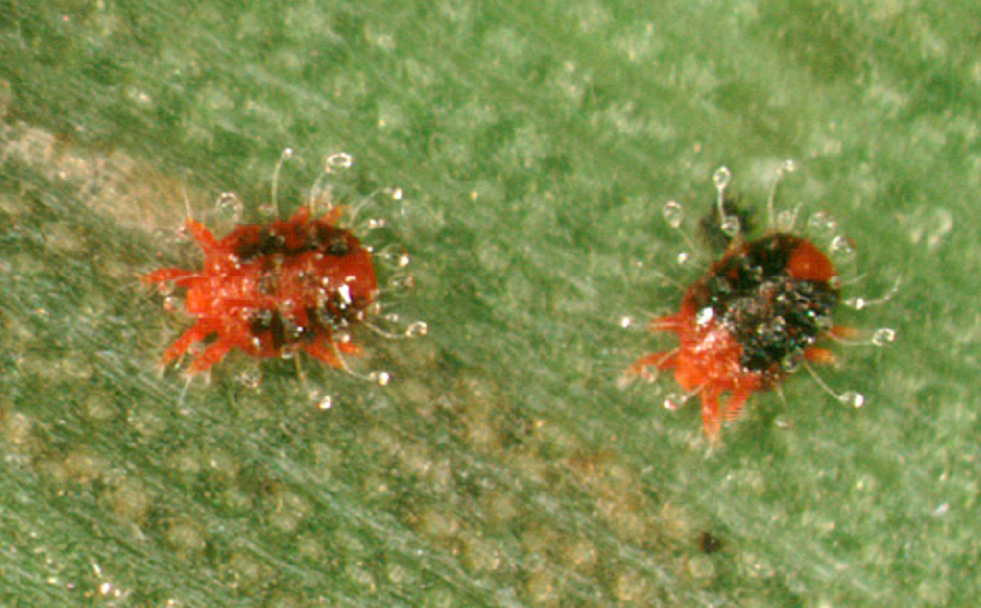The National Agricultural Research and Extension Institute (NAREI) will not be promoting the use of monocrotophos to combat the infestation of Red Palm Mite presently affecting coconut farmers in Region Two.
This is according to Director of NAREI Dr Oudho Homenauth, who explained to Stabroek News that the chemical’s classification as a persistent organic pollutant that is extremely toxic to birds and humans renders it too hazardous for widespread use. “We can’t promote it,” he said, adding, “There are other safer chemicals that can be used.”
Homenauth was responding to reports that farmers in the Pomeroon area had called for the importation of the insecticide to assist in the management of the pest, which they say is on the way to decimating this year’s coconut crop.

The Red Palm Mite (Raoiella indica), a pest of several palm species, uses its stylet-like mouthparts (chelicerae) to pierce the plant tissue and extract cell contents. This action damages the guard cells of the leaves leading to uncontrollable water loss from the plant. The leaves yellow, then brown before eventually dying and taking the plant with it.
The red mite was first identified in the Caribbean in 2003. Since then, it has spread presumably by wind currents to more than 12 Caribbean countries now inclusive of Guyana.
At a 2008 invasive species symposium, Red Palm Mite expert Dr Amy Roda revealed that coconut growers in the then affected countries were reporting a 70 per cent reduction in yield.
Its presence in Guyana in the Pomeroon area was confirmed last month by NAREI. Homenauth had previously acknowledged that the present parasitic infestation, the scale of which is yet to be determined, can have severe consequences for the sector if not properly managed.
In this vein, NAREI has made several efforts to equip farmers to best respond to this infestation. A team of officers from NAREI had met with 97 farmers at Friendship Estate and 37 at Grant Macedonia to discuss ways of preventing and managing the parasitic infestation.
From June 9th to June 11th, officers of the agency educated these farmers on the need to practise proper sanitation and regular clearing of coconut estates to remove host plants such as the wild Heliconia and thus slow the spread of the parasites. The farmers were also provided with the insecticide abamectin, which can be used as a spray or drilled into the plant to kill the pest. The institute has also provided groups of farmers with the necessary drills.
At a July 19th meeting with Region Two Chairman Devanand Ramdatt, farmers said that recent persistent rainfall has led to a resurgence of the parasite. Homenauth disputes this claim. “Rain is supposed to wash it away, not restart the problem. The rain is supposed to speed the absorption of the chemical,” he said, adding that “it hasn’t been long enough to see major results. Chemicals take more than a month for you to see results.”
Homenauth believes that the farmers are simply trying to pressure NAREI to provide more chemicals free of cost. “I think these farmers just want more chemicals. There are chemicals, other than monocrotophos that can be used but they want us to provide it free, which we can’t do. We used our resources to start them off, but we can’t provide these chemicals free continuously,” he said.
Homenauth stressed that any efforts at species control must be an integrated approach that addresses other host plants of the insect, such as Wild Heliconia, plantains and bananas. To this end, Guyana is collaborating with regional and international partners, such as the Food and Agriculture Organisation (FAO), to institute best practices in its efforts to combat the parasite.






